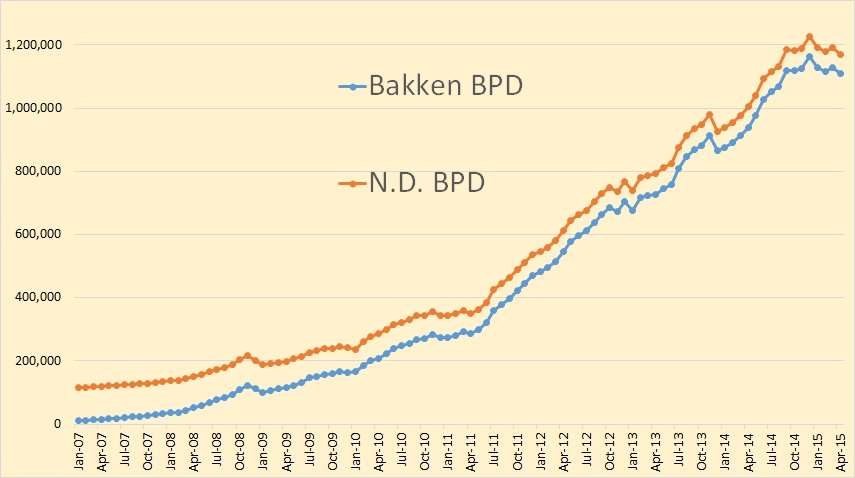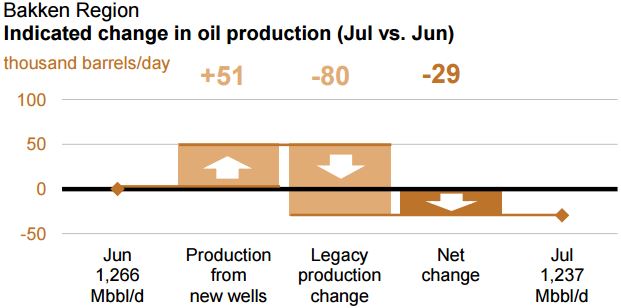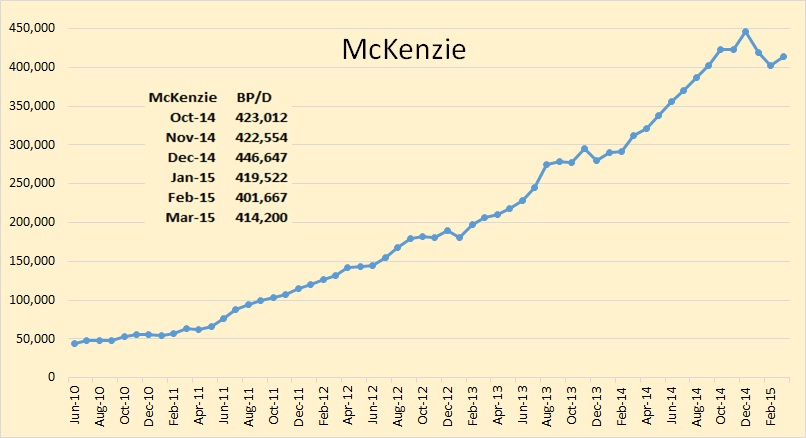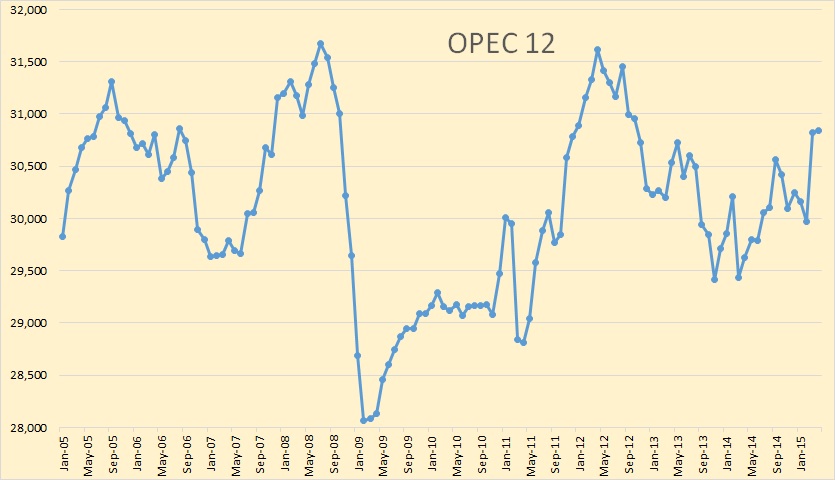The North Dakota Industrial Commission is out with the April production Data for the Bakken and all North Dakota.
Eight month of flat to down production from the Bakken.
I have shortened the data to 16 months here to give a better picture of what is really happening. North Dakota reached an 8 month low. North Dakota, in April, was 17,631 barrels per day below their September 2014 production. The Bakken was only 11,024 below September 2014 so conventional wells seem to be dropping off pretty fast.








